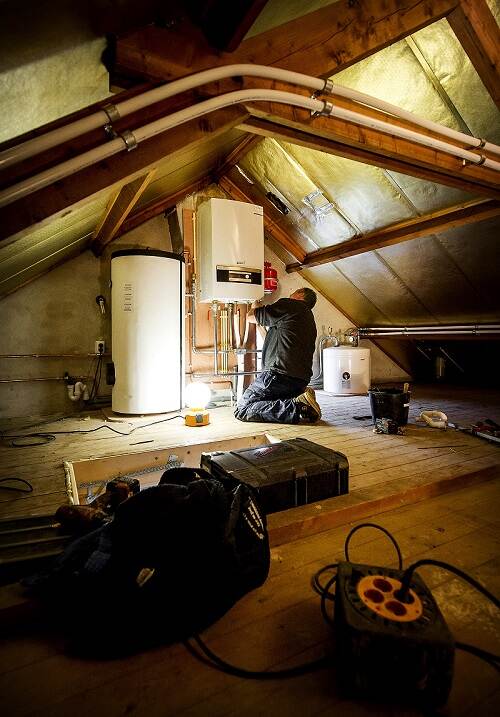Hidden costs of the National Energy Retrofit Fund
The National Energy Retrofit Fund (ERF) is a scheme to make homes sustainable. By the end of 2021, the fund (initially called the National Energy Saving Fund) had lent nearly €650 million to home owners to retrofit, for instance, solar boilers and heat pumps. An audit by the Netherlands Court of Audit, however, concludes that the ERF contributes less to sustainable homes than grant schemes that have a comparable goal. Furthermore, the cost of the ERF is not disclosed in the budget approved by parliament.

Less take-up than grant schemes
The ERF was taken up by fewer home owners than two grant schemes that have a comparable goal, the Sustainable Energy and Energy Saving Investment Grant Scheme (ISDE) and the Home Energy Saving Grant Scheme (SEEH). It accordingly contributes less to reducing CO2 emissions than the ISDE and SEEH. However, the ERF’s cost to the public purse per reduced tonne of CO2 are lower. If home owners apply to the ERF for a loan and are also awarded a grant, the cost to the public purse per reduced tonne of CO2 can be higher than the €300 ceiling laid down in the Renewable Energy Grant Scheme and Climate Transition Regulation.
Hidden cost of the Energy Retrofit Fund
Although the money the government invests in the ERF seems to be returned, its value is eroded by inflation. Money the government invests in the ERF is repaid decades later and is worth less. The Court of Audit has calculated that by the time the first loans awarded by the ERF are repaid to the treasury they will be worth only about half their original value. The Court of Audit could not see this loss of value in the information parliament receives on the cost of the ERF.
Alternative to the market but also a competitor
The ERF is an absolute necessity for some people, such as home owners who are not eligible for a bank loan. Many other home owners, however, can take out bank loans but apply to the ERF because its loans are nearly always awarded on more favourable conditions. The ERF is therefore not only an alternative to market parties but also a competitor to them. When the ERF was established, the minister wrote that some home owners would not need it if banks offered loans on sufficiently attractive conditions. It is uncertain what the minister meant by ‘sufficiently attractive’.
Revolving funds
The ERF is a revolving fund. The Court of Audit noted in an earlier audit that such public funds are autonomous from government and parliament and are growing in popularity. The loans and guarantees the funds award to businesses, private individuals and the public and semi-public sectors are repaid and returned to the fund. Unlike grants, the money can thus be revolved several times. This apparently ‘costless’ use of taxpayers’ money sounds attractive.
In 2017, €3.6 billion in taxpayers’ money had been placed in revolving funds. The Court concluded from its earlier audit, however, that parliament does not always have an insight into their results or hidden costs.
Recommendations regarding the Energy Retrofit Fund (and other revolving funds)
This report looks at the efficiency and effectiveness of one particular revolving fund, the Energy Retrofit Fund. In an earlier audit, however, we concluded that other revolving funds also suffer from hidden costs and lack of insight into efficiency. The assessment frameworks currently in place do not provide sufficient assurance on the proper use of revolving funds. As the funds are awarded for tens of years, mid-term evaluations are necessary to check that the funds are being used efficiently and that government intervention is still preferable to market forces. There is a risk that the funds become a goal in themselves. We therefore recommend that an assessment framework be introduced specifically for revolving funds.
Government response
The Minister of Housing and Spatial Planning and the Minister of Finance wrote in their response that they would not act on our recommendation to introduce an assessment framework specifically for revolving funds. Parliament’s budget scrutiny was protected, they wrote, because the funds were financed from ministerial budgets and the current integrated assessment framework already helped parliament take informed decisions on the use of such funds.
Court of Audit’s afterword
The Court of Audit has learnt from its audits that the existing frameworks do not provide sufficient assurance and that revolving funds deserve special attention.